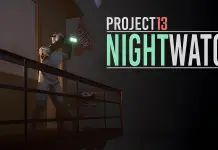Review: Assassin’s Creed Shadows
It would be tough to argue that the Assassin’s Creed franchise isn’t oversaturated. The latest game, Assassin’s Creed Shadows, is the 14th mainline Assassin’s Creed title that has been released since the series debuted in 2007, and the 23rd overall including spin-offs. That number is even higher if you include all the mobile games that have come and gone, plus the (slightly better than its reputation suggests) 2016 movie. That degree of ubiquity can breed wariness, or even contempt, and it has made it difficult to keep getting excited about new releases.
But Assassin’s Creed Shadows is also the game that fans of the series have been asking for since the second game came out – finally, an entry set in feudal Japan, where you use shinobi and samurai skills to scale castles and assassinate warlords. Shadows isn’t a total refresh for the franchise, but it does feel like much intentionality has gone into making this entry particularly impactful and engaging.
Shadows features two playable characters, Naoe and Yasuke. Naoe is a shinobi who, during the game’s opening missions, loses her father and her homeland to the Shinbakufu, a group of masked assassins that she swears bloody revenge on. Yasuke, meanwhile, has arrived in Japan as a slave, but is soon granted a position at the right hand of Lord Oda Nobunaga, a real-world historical figure. At first, Naoe and Yasuke seem to be set on a collision course on opposing sides of battle – but, as is often the case in Assassin’s Creed games – the deeper lore of the series soon brings them together as allies.
This setting brings a renewed focus and energy to the series. Whereas some Assassin’s Creed games have split the difference awkwardly between stealthy assassinations and more RPG-like mechanics, Shadows manages to do it all – it’s a good loot-driven RPG, a fun stealth experience, and an enjoyable combat action experience, all wrapped up in a huge map full of secrets and extra missions. Despite doing so many different things, there’s a strong sense of balance here – it feels less like a giant checklist of objects to tick off and more like you’ve been placed in a world worth exploring and mastering.
Naoe is a stealth expert, and the game has a greater focus on sneaking to accommodate her. This is the first Assassin’s Creed to work light and dark into the stealth mechanics, letting you sneak around castles at night, snuffing out candles and taking down light fixtures. Yasuke, on the other hand, is a brawler – he’s a less adept climber, but he’s able to do huge damage in combat. Once you unlock both characters you can switch between them seamlessly, and though I (and I suspect most players) mostly stuck to Naoe’s slinky speed and cool acrobatics, it’s nice to have the option. The game’s plot weaves together the shared journey these two characters find themselves on, and while Naoe’s story is a little more compelling than Yasuke’s for most of the running time, by the end I found myself quite attached to both of them.
Shadows has a huge map, full of castles, temples, towns, and wide open expanses, and slowly exploring and unlocking the whole thing is exciting. There’s a lot of repeated architecture, but it’s lovely stumbling across interesting tableaus and playing tourist in Ubisoft’s virtual Japan. The iconography of the era – playing as a ninja, slipping across rooftops unseen, combating powerful samurai and bursting through paper walls, katana in hand – is inherently compelling and beautifully realised. The game’s enhanced weather effects are fantastic, too. Seasons pass as the game progresses, and missions will look and feel differently depending on the conditions outside – a stealth mission on a rainy winter night gives you an advantage, but on a bright summer day with no shadows to hide in you might want to switch to Yasuke.
Granted, the gameplay loop of Assassin’s Creed can get a little repetitive across basically every entry in the series – you’ll be fighting a lot of very similar enemies, and exploring environments that can blend together after a while. There’s not a lot of variety in the missions themselves, but the game, at least, gives you lots of different unlockable weapons and tools that change the way you play. You can upgrade your characters as you go, and using new abilities and strategies stops the game from ever tipping over into being dull. It’ll take 40-50 hours to finish the game (and that’s if you race past a lot of optional missions) and I found that if I sat down to play for half an hour I’d accidentally lose several hours to the game instead.
No matter where you are on the map, odds are that there’s something new you can do to move the action forward right nearby. The mission structure encourages you to explore, to really get to know each region, and going for a horse ride across the beautiful countryside to investigate an unidentified spot on your map is just as enjoyable as assassinating bad guys.

For lapsed fans of the Assassin’s Creed franchise, Shadows is a strong re-entry point – or entry point full-stop if you’ve managed to avoid the series. It’s a particularly focused and compelling version of the Assassin’s Creed formula. A Japan-set entry in the Assassin’s Creed series was always going to carry big expectations, and Shadows lives up to them.
Assassin’s Creed Shadows is available now on PC, PS5, and Xbox Series X/S. A PS5 copy was provided by the publisher for this review.
James O’Connor has been writing about games since 2008. He is the author of Untitled Goose Game for Boss Fight Books.
Photo credit: Ubisoft




















_(4)-218x150.png)















